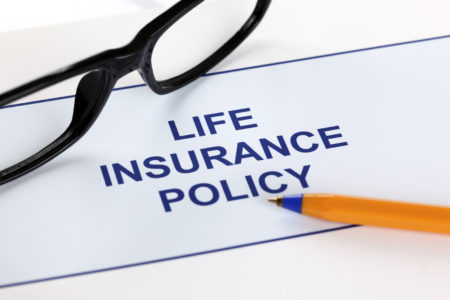How do I find affordable life insurance for seniors?
FREE Life Insurance Comparison
Secured with SHA-256 Encryption
Compare quotes from the top life insurance companies and save!
- Age, health, and procrastination all affect life insurance rates
- Whole Life lasts until you need it
- Term life insurance is life coverage for a limited term of time
Senior citizens are closer to the end of their life, as opposed to many people, and many have neglected to take care of their life insurance.
They may have a friend or acquaintance who has recently passed away, and the stark reality of the finality of death occurring becomes readily apparent.
When a person of advanced years begins to check on rates for life insurance at advanced ages, they learn that the costs of life insurance can be very high indeed at advanced ages.
All of the ads for life insurance in the media touting $500,000 of 10-year term insurance for $25 a month is never going to happen for them.
Higher costs at older ages point out that purchasing life insurance earlier in life is a wise move.
Learn more about affordable insurance options below and make sure to use our free insurance quote tool above to compare the best rates for you today!
Health Issues

The second problem that people have who are older is that of declining health.
One of the criteria for purchasing life insurance is that a person has to qualify for coverage based on their medical history and their current health.
If you have bad health or pre-existing health problems, your life insurance premiums might be rated up, or you could be declined for coverage.
Procrastination
Even as painful as the situation might be, rates are not going to get any cheaper, as our elder citizens continue to age. The tendency for us all is to put things off that are unpleasant and out of our normal routine.
Thinking about life insurance and one’s impending demise is not what most of us get too excited about, so it is easy to put off such decisions and the result is in many cases, nothing gets done.
However, procrastination in this area could cost a person a lot more money because they will be purchasing insurance at older ages. And the longer they wait, the more the cost is going to be.
Also, a person always runs the risk that they will become uninsurable due to their health, so the sooner a life insurance plan is put into place, the better.
Whole Life VS. Term Life Insurance

To the beneficiary, life insurance proceeds are simply money, paid because somebody just died. The beneficiary, or named recipient of the life insurance proceeds doesn’t care whether the policy was whole life or term insurance.
When it comes to purchasing whole life or term, the decision can be based on several different factors and life situations.
Term Life Insurance
Term life insurance is life coverage for a limited term of time, then at the end of the term, the coverage automatically expires.
A term life policy is usually sold in 10-year increments, so a term of coverage could be 10, 20, or 30 years. Some plans might have term periods of 5, 15, or 25 years; it just depends on the life insurance company.
The cost of term life insurance is relatively inexpensive because the life insurance is not on the hook for the older ages of people where the majority of deaths occur.
If you look at a life table of the number of survivors out of 100,000 people born, the most deaths occur when those people reach old age.
Term life insurance is a perfect product for a younger person who has a need for a significant amount of life insurance, yet there are limitations in that person’s budget.
Term life insurance can be purchased in large amounts for a smaller premium. While a family’s children are young, lots of coverage can be in place, and when the children grow up, the need for coverage is usually not as great.
In essence, term coverage is for temporary needs, if you can define temporary as not being for a person’s life expectancy. Some term policies can be converted to permanent plans, so there is good flexibility in the process, but few people convert unless they are prompted by an agent.
Whole Life Insurance

Whole Life Insurance is also called “permanent life insurance,” as opposed to “temporary life insurance” which is term. Whole life insurance lasts until a person’s mortality age is attained, which is age one hundred. The policy then matures, or endows and the death benefit is paid to the insured.
We have already learned that as a person ages, the cost of the life insurance rises as well because the individual has a better chance of death the older he or she become.
This cost is a reality, whether a life insurance policy is a term policy or a whole life policy.
It makes logical sense to have an increasing premium charged to a policyholder in such a case because if the cost of coverage is increasing, the payer of the premiums should respond accordingly and pay more each year.
In effect, this is what happens with term insurance. There is a type of term life insurance, called annual renewable term where the cost increases each year. The only problem is that in the later years the cost becomes prohibitive as the costs mimic the mortality costs.
Whole Life and The Reserve Fund
Whole life policies have a reserve fund which is designed to keep the premium on the policy at a level amount throughout the life of the policy.
In essence, more premium is paid into the policy than is needed, and this in turn offsets the higher premiums required in the later years. This fund is also called the cash value, which is available for policy loans.
If a loan is taken on the policy, the death benefit is reduced accordingly.
Whole Life Is More Appropriate For Older Policyholders

Even though Whole life insurance costs more from the standpoint of cash flow, it is more appropriate for older people to own.
Whole life coverage is more appropriate if a person wants to have life insurance in place for their entire life. Most term insurance purchased earlier in life runs out of time by the time a person is a senior citizen and still needs life insurance coverage.
Whole Life Affordability
The best strategy for finding the best whole life policy at any age is to work with an experienced life insurance broker. The broker will be able to look into several companies and compare costs and cash value return.
Some whole life policies pay dividends on top of the cash values which can make that type of policy very attractive. Add to the mix, universal life, which pays interest, and indexed universal life which cannot lose money according to the contract.
If your health is good, you can purchase just about any policy you can afford. If you do have health problems, there are still many companies who will be able to offer modified and guaranteed issue policies.
These policies might not pay a death benefit for the first couple of years, but if a death occurs, all of the premiums are paid to your beneficiary plus interest of 10 to 20 percent.
In conclusion, get all of the information that you possibly can and rely on your broker to not only find good plans and rates but to also assist you with the fine details, such as beneficiary arrangements and appropriate coverage.
Don’t forget to use our free comparison quote tool below and start comparing rates today!
Start Saving on Life Insurance!
Enter your zip code below to compare rates from the top companies in your area
Secured with SHA-256 Encryption



